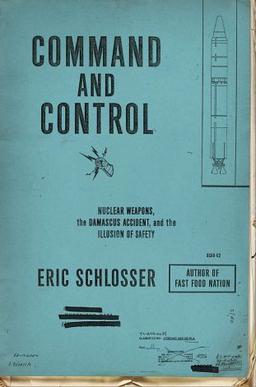
Did you know that there used to be a giant underground installation that was meant to house all of Congress – the Senate and the House – in the event of a likely Soviet nuclear attack? It was housed underneath the Greenbrier hotel and resort in White Sulphur Springs, WV. I read about it in Eric Schlosser’s excellent book Command and Control: Nuclear Weapons, the Damascus Incident, and the Illusion of Safety.
This ridiculous underground structure was built in the early 1960s, peak “bunker” era for the United States. We tend to think of the bunker panic of the 1950s and 1960s as a bit silly, especially since we now know that the Soviet Union had nowhere near the weapons capabilities we were told they did during the Cold War. But as Schlosser points out, nuclear annihilation was assumed to be the next step after the US used atomic bombs on Hiroshima and Nagasaki. As the US stockpiled and developed even more destructive weapons, the USSR was trying to do the same. The US military and government were so concerned about future world wars that several plans for dropping hundreds of nukes on the Russian republic itself were drawn up. Add to these conceptual fears the very real Cuban Missile Crisis of 1962, and perhaps we shouldn’t look back with such disdain on the bunker builders – death from above (which is still not totally impossible for us today) was an everyday worry.
So it is into this era of nuclear fear that we get the Greenbrier underground compound. The existence of this structure was confirmed and exposed by Ted Gup in a 1992 article in the Washington Post:
Unlike other government relocation centers, built mainly to house military and executive branch officials who would manage a nuclear crisis and its aftermath, the Greenbrier facility was custom-designed to meet the needs of a Congress-in-hiding, complete with a chamber for the Senate, a chamber for the House and a massive hall for joint sessions. Its discovery offers the first conclusive evidence that Congress as a whole was even included in government evacuation scenarios and given a role in postwar America. Today, the installation still stands at the ready, its operators still working under cover at the hotel — a concrete-and-steel monument to the nuclear nightmare. The secrecy that has surrounded the site has shielded it both from public scrutiny and official reassessment, and may have allowed it to outlive the purpose for which it was conceived.
The Greenbrier was one of a few other underground facilities that were built to house other components of the federal government – a place for the President, a place for the Vice President, etc. But while those locations were more for survival during and after an attack, the Greenbrier facility was designed and built so that the full Congress could continue working for as long as necessary, both underground and above, in the resort’s main exhibition halls and conference rooms. (How those above ground facilities survive the nuclear blast, I’m not sure.) Additional components of the underground facility included an infirmary, a dormitory with dozens of showers, completely stocked with soap, and an incinerator for dead bodies. This all sounds incredibly serious, but the facility was never needed and was never used, although it was kept stocked and maintained until it was shuttered shortly after the publication of Gup’s article. The one time the facility almost saw action was in fact during the Cuban Missile Crisis. Some crates were shipped to the Greenbrier hotel during the height of that 2 week period, and a former official recalled they contained “original manuscripts dating back to the 18th century, part of an apparent effort to disperse critical government documents so that they would not all be incinerated in a nuclear conflagration.”
Of course, the Greenbrier facility was highly impractical and ultimately may have only benefited the contractors who got to build it. The truth is, a nuclear attack, especially one centered on Washington, D.C., would make it impossible for hundreds of Congresspeople to essentially 1) abandon their families and 2) make their way 5 hours outside of town through what would surely be a highly dangerous post-atomic landscape. Ideally, the government would have had some advanced notice of the attack, but it seems it would be even harder to corral Congresspeople to the Greenbrier hotel in that case.
I find this story so interesting because in 2019 we hear so often what we can’t do, what is impractical, and why things can’t change. There’s always money and the will to overcome difficulties and to attack challenges. The Greenbrier facility was likely a highly advanced bit of architecture, engineering, and construction. Its costs will probably never be really known. And yet, we can’t seem to find the money or willpower to provide healthcare or education to people, or to tackle climate change in a serious way. Fear is a great motivator – it motivated hundreds of underground facilities by organizations and families who had a reasonable, realistic fear of nuclear annihilation. Climate annihilation appears to be upon us, so I would love it if we could find our way to the Greenbrier again, this time keeping all of us in mind.

Pingback: 2019 in Books | Sharyn Emery